Bonsai trees are a unique and beautiful addition to any home. However, they require special care and attention to stay healthy and vibrant. One common issue that bonsai owners face is brown spots on the leaves of their trees. These spots can be unsightly and may indicate a larger problem with the tree’s health.
Understanding the causes of brown spots on bonsai leaves is an important step in maintaining the health of your tree. Brown spots can be caused by a variety of factors, including fungal disease, insect infestations, and bacterial leaf spots.
Additionally, poor soil quality, over or underwatering, and inadequate sunlight can all contribute to the development of brown spots on bonsai leaves. By identifying the underlying cause of the problem, you can take steps to address it and prevent further damage to your tree.
Key Takeaways
- Proper care and attention are key to maintaining the health of bonsai trees.
- Brown spots on bonsai leaves can be caused by a variety of factors, including fungal disease, insect infestations, and poor soil quality.
- Identifying the underlying cause of brown spots is crucial for preventing further damage to your tree.
Also read:
Understanding Bonsai Trees
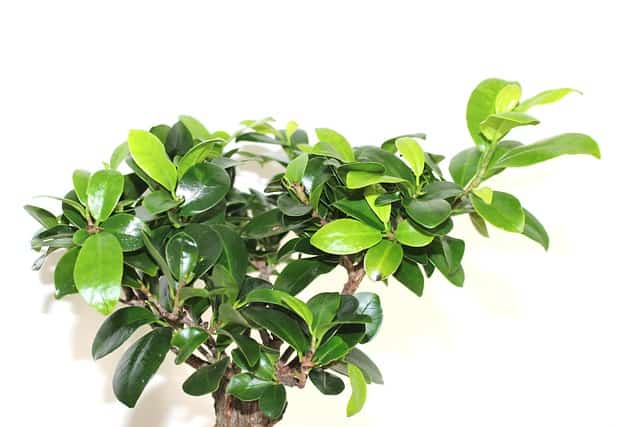
Bonsai trees are miniature versions of full-sized trees, grown in small containers. They are known for their natural beauty and calming energy, and are often used as ornamental plants. Bonsai trees can be made from a variety of tree species, including juniper and deciduous trees like maple.
The art of bonsai involves careful pruning and shaping of the tree to create a miniature version of a full-sized tree. This process requires skill and patience, as well as a deep understanding of the tree species being used.
Different tree species require different care, and it is important to choose the right species for your climate and environment.
Juniper bonsai trees are one of the most popular types of bonsai trees. They are known for their hardiness and adaptability, making them a great choice for beginners. Juniper bonsai trees require well-draining soil and plenty of sunlight, but can tolerate some shade.
Deciduous trees like maple also make great bonsai trees. They require more maintenance than juniper trees, but are worth the extra effort for their striking natural beauty. Maple bonsai trees require regular pruning and shaping to maintain their miniature size, and should be kept in a well-lit area.
Overall, bonsai trees are a unique and rewarding way to bring natural beauty into your home or garden. With the right care and attention, they can thrive for many years, providing a calming and peaceful energy to any space.
Brown Spots on Bonsai Leaves – 3 Common Problems
Bonsai trees are delicate plants that require constant care and attention. Even with the best care, they can still develop issues that affect their health and appearance. It is important to be aware of the common issues that bonsai trees face and the symptoms associated with them so that you can take prompt action to address them.
1. Pest Infestation
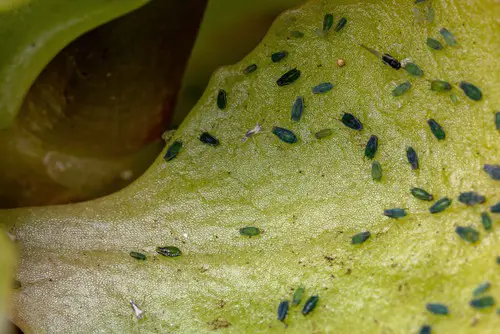
One of the most common issues that bonsai trees face is pest infestation. Pests such as mites, aphids, and scale insects can cause significant damage to the leaves and branches of the tree.
The symptoms of pest infestation include discolored leaves, white or black spots on the leaves, and swollen bark. In severe cases, the tree may wilt and die.
To prevent pest infestation, it is important to keep the tree healthy and clean. Regularly inspect the tree for signs of infestation and take prompt action if you notice any pests. You can use insecticidal soap or neem oil to treat the infestation.
2. Fungal and Bacterial Diseases
Fungal and bacterial diseases can also affect bonsai trees. These diseases can cause brown spots, black spots, and white spots on the leaves. The leaves may also wilt and turn brown. In severe cases, the tree may die.
To prevent fungal and bacterial diseases, it is important to keep the tree clean and well-ventilated. Avoid overwatering the tree as this can create a damp environment that is conducive to the growth of fungi and bacteria. If you notice any signs of disease, remove the affected leaves and treat the tree with a fungicide or bactericide.
3. Nutrient Deficiencies
Nutrient deficiencies can also affect the health of bonsai trees. Common nutrient deficiencies include iron, nitrogen, and potassium deficiencies. The symptoms of nutrient deficiencies include yellowing leaves, brown leaves, and stunted growth.
To prevent nutrient deficiencies, it is important to fertilize the tree regularly with a balanced fertilizer. You can also add iron supplements to the soil if you notice signs of iron deficiency. It is important to follow the manufacturer’s instructions when applying fertilizers and supplements to avoid over-fertilization, which can damage the tree.
Role of Water in Bonsai Health
Bonsai trees are delicate plants that require a careful balance of water to maintain their health. Water plays a crucial role in the growth and development of bonsai trees. However, too much or too little water can cause problems such as brown spots on the leaves.
Over-Watering and Under-Watering
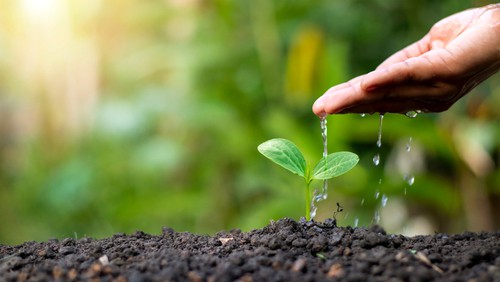
Over-watering is a common problem that can lead to root rot and other diseases. When the soil is constantly wet, the roots of the bonsai tree can become waterlogged and begin to rot.
This can lead to a lack of oxygen in the soil, which can further damage the roots. Over-watering can also cause the leaves of the bonsai tree to turn yellow or brown.
On the other hand, under-watering can also cause problems for bonsai trees. When a bonsai tree is not watered enough, its leaves can turn brown and fall off. This is because the tree is not receiving enough water to support its growth and development.
Under-watering can also cause the soil to become too dry, making it difficult for the roots to absorb water and nutrients.
Humidity and Bonsai Health
Humidity is another important factor in the health of bonsai trees. Bonsai trees require a certain level of humidity to thrive. If the air is too dry, the leaves of the bonsai tree can become brown and brittle. This is because the tree is not receiving enough moisture from the air to support its growth.
To maintain the proper level of humidity for a bonsai tree, it is important to mist the leaves regularly. This can be done using a spray bottle filled with water. It is also a good idea to place the bonsai tree on a tray filled with water and pebbles. This will help to increase the humidity around the tree.
Importance of Light and Sun
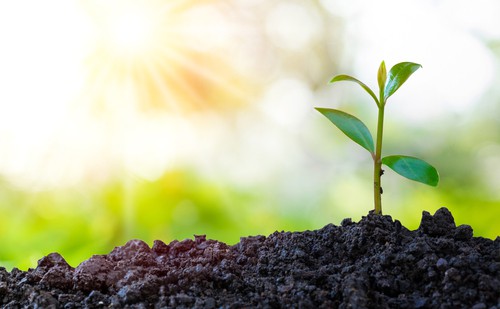
Light and sun are crucial factors for the growth and health of bonsai trees. Bonsai trees, like other plants, require sunlight to perform photosynthesis, which is the process of converting light energy into chemical energy to fuel growth. Without adequate light, bonsai trees can suffer from various problems, including brown spots on leaves.
Direct sunlight is essential for the growth of bonsai trees, but too much of it can be harmful. Direct sunlight can cause the leaves to dry out and become scorched, leading to brown spots. Therefore, it is essential to ensure that the bonsai tree receives the right amount of sunlight.
Lack of sunlight can also cause brown spots on bonsai leaves. When bonsai trees do not receive enough sunlight, their leaves become weak and susceptible to diseases and pests. Moreover, the lack of sunlight can cause the bonsai tree to become stressed, leading to brown spots on the leaves.
To ensure that bonsai trees receive adequate sunlight, it is essential to place them in a location where they can receive direct sunlight for at least six hours a day. However, it is also important to protect them from the scorching sun by providing shade during the hottest part of the day.
Soil and Fertilizer for Bonsai
Soil and fertilizer are critical components of bonsai tree care. Bonsai trees require specific soil mixtures and nutrient levels to thrive. The soil mixture should be well-draining, allowing for proper water and air circulation. Most bonsai enthusiasts use a mixture of Akadama, Pumice, and Lava Rock as a soil mix.
Fertilization is also essential for the health of the bonsai tree. Bonsai trees require a balanced fertilizer that contains nitrogen, phosphorus, and potassium.
Nitrogen is necessary for leaf and stem growth, while phosphorus is essential for root development and flowering. Potassium helps to increase the tree’s resistance to disease and stress.
In addition to these primary nutrients, bonsai trees also require trace elements such as iron and magnesium. Iron is essential for the production of chlorophyll, which gives leaves their green color. Magnesium is critical for photosynthesis, the process by which plants convert sunlight into energy.
Bonsai trees should be fertilized every two weeks during the growing season, which is typically from spring to fall. During the winter, fertilization should be reduced to once a month. Over-fertilization can be harmful to the tree, so it is essential to follow the recommended dosage on the fertilizer package.
Mulching is another essential aspect of bonsai tree care. Mulch helps to retain moisture in the soil, regulate soil temperature, and suppress weed growth. Organic mulches such as bark, leaves, or compost can be used in the bonsai pot.
Bonsai Pruning and Repotting

Bonsai trees require pruning and repotting to maintain their health and beauty. Pruning is the process of removing dead or overgrown branches and leaves to promote new growth and maintain the desired shape of the tree.
Repotting, on the other hand, involves transferring the tree to a new pot with fresh soil to provide it with the necessary nutrients and space to grow.
Pruning is a crucial aspect of bonsai care as it helps to maintain the tree’s shape and size. It is recommended to prune the tree during the growing season, which is usually in the spring or summer.
Pruning should be done carefully to avoid damaging the tree. It is essential to use proper tools and techniques to ensure that the tree is pruned correctly.
Repotting is another important aspect of bonsai care. It is recommended to repot the tree every two to three years to provide it with fresh soil and remove any dead roots.
Repotting should be done during the tree’s dormant period, which is usually in the winter. It is important to choose the right soil mix and pot size for the tree to ensure that it has enough space to grow.
Pruning and repotting can also be used to promote new growth in a bonsai tree. Pruning can encourage the tree to produce new branches and leaves, while repotting can provide it with fresh nutrients to support growth.
However, it is important to be careful not to over-prune or over-repot the tree, as this can cause stress and damage to the tree.
Preventing and Treating Bonsai Diseases
Bonsai trees are prone to diseases and infections, which can cause brown spots on the leaves. Preventing and treating bonsai diseases is crucial to keep the tree healthy and thriving. In this section, we will discuss some effective ways to prevent and treat bonsai diseases.
1. Using Fungicides
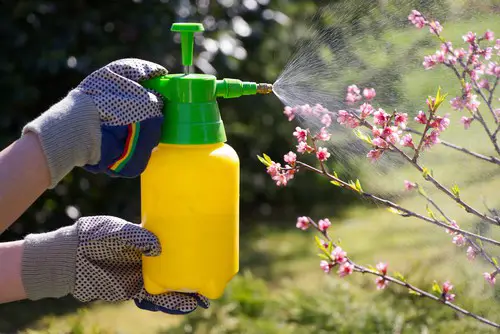
Fungicides are chemical compounds that are used to kill or prevent the growth of fungi. They are effective in preventing and treating fungal diseases in bonsai trees. When using fungicides, it is important to follow the instructions carefully and use the appropriate dosage. Overuse of fungicides can cause harm to the tree.
2. Natural Remedies
Natural remedies are an effective way to prevent and treat bonsai diseases without using chemicals. Here are some natural remedies that you can use:
- Neem oil: Neem oil is an effective natural fungicide that can prevent and treat fungal infections in bonsai trees. It is safe to use and does not harm the tree.
- Chamomile tea: Chamomile tea is a natural anti-fungal agent that can help prevent fungal diseases in bonsai trees. You can spray the tea on the tree or use it as a soil drench.
- Baking soda: Baking soda is an effective natural remedy for treating fungal diseases in bonsai trees. Mix one tablespoon of baking soda with one gallon of water and spray the solution on the tree.
3. Other Tips to Prevent Bonsai Diseases
Apart from using fungicides and natural remedies, there are other tips that you can follow to prevent bonsai diseases:
- Keep the tree healthy: A healthy tree is less prone to diseases and infections. Make sure that the tree gets enough sunlight, water, and nutrients.
- Avoid stress: Stress can weaken the tree’s immune system and make it more susceptible to diseases. Avoid over-pruning, over-watering, and other stress factors.
- Keep the tree clean: Clean the tree regularly to remove any dead or diseased leaves. This will prevent the spread of diseases to other parts of the tree.
Dealing with Bonsai Pests
Identifying Common Bonsai Pests
Bonsai trees are susceptible to a variety of pests, including insects, spider mites, aphids, mealybugs, and scale insects. Signs of pests on a bonsai tree may include yellowing or browning leaves, holes in the leaves, and webbing on the branches.
One common pest that affects bonsai trees is root rot. This occurs when the roots of the tree become waterlogged and begin to decay. Signs of root rot include yellowing leaves, wilting branches, and a foul odor coming from the soil.
Treatment and Prevention
To treat pests on a bonsai tree, it is important to identify the specific pest and use the appropriate treatment method. For example, spider mites can be treated with a light pesticide or by blasting the plant with a stream of water to remove the webbing. Mealybugs can be treated with soapy water or by using a systemic insecticide.
Preventing pests on a bonsai tree involves maintaining a healthy growing environment. This includes keeping the tree well-watered but not overwatered, ensuring the soil is well-draining, and keeping fallen leaves and flowers cleaned up.
Regularly inspecting the tree for signs of pests and promptly treating any infestations can also help prevent further damage.
In addition to pests, bonsai trees are also susceptible to scale insects. These pests have a protective shell that can repel pesticides, making them difficult to treat. However, drops of alcohol or surgical spirits can help weaken the shell and make pesticide treatments more effective.
Overall, dealing with pests on a bonsai tree requires a combination of identification, treatment, and prevention. By maintaining a healthy growing environment and promptly treating any signs of infestation, bonsai enthusiasts can keep their trees healthy and thriving.
Frequently Asked Questions
What causes brown spots on bonsai leaves?
Brown spots on bonsai leaves can be caused by several factors, including fungal disease, insect infestations, bacterial leaf spots, overwatering, and underwatering. It is important to identify the specific cause of the brown spots to take the appropriate steps to fix the problem.
How can I prevent brown spots on my bonsai leaves?
To prevent brown spots on bonsai leaves, it is essential to maintain proper care of your bonsai tree. This includes ensuring that the tree receives the right amount of water, sunlight, and nutrients. It is also important to regularly inspect the tree for signs of pests or disease and take action immediately if any are detected.
Are brown spots on bonsai leaves a sign of disease?
Brown spots on bonsai leaves can be a sign of disease, but they can also be caused by other factors such as overwatering or insect infestations. It is important to identify the specific cause of the brown spots to determine if it is a sign of disease or another issue.
What is the best way to treat brown spots on bonsai leaves?
The best way to treat brown spots on bonsai leaves depends on the specific cause of the problem. If the brown spots are caused by disease, it may be necessary to apply a fungicide or other treatment. If the spots are caused by overwatering or underwatering, adjusting the watering schedule may be necessary. It is important to identify the specific cause of the brown spots before attempting to treat the problem.
Can brown spots on bonsai leaves be caused by overwatering?
Yes, brown spots on bonsai leaves can be caused by overwatering. When a bonsai tree is overwatered, the roots can become waterlogged, which can lead to fungal growth and other issues. It is important to ensure that the tree is not receiving too much water and that excess water is allowed to drain properly.
Should I prune bonsai leaves with brown spots?
Pruning bonsai leaves with brown spots is not always necessary. If the brown spots are caused by a temporary issue such as overwatering or insect infestations, the leaves may recover on their own. However, if the brown spots are caused by disease or a more severe issue, pruning may be necessary to prevent the problem from spreading to other parts of the tree. It is important to identify the specific cause of the brown spots before deciding whether or not to prune the affected leaves.

Hey, I’m Lisa and I’ve been an avid gardener for over 30 years. I love writing, talking and living in the garden! Feel free to connect with me on my socials below


